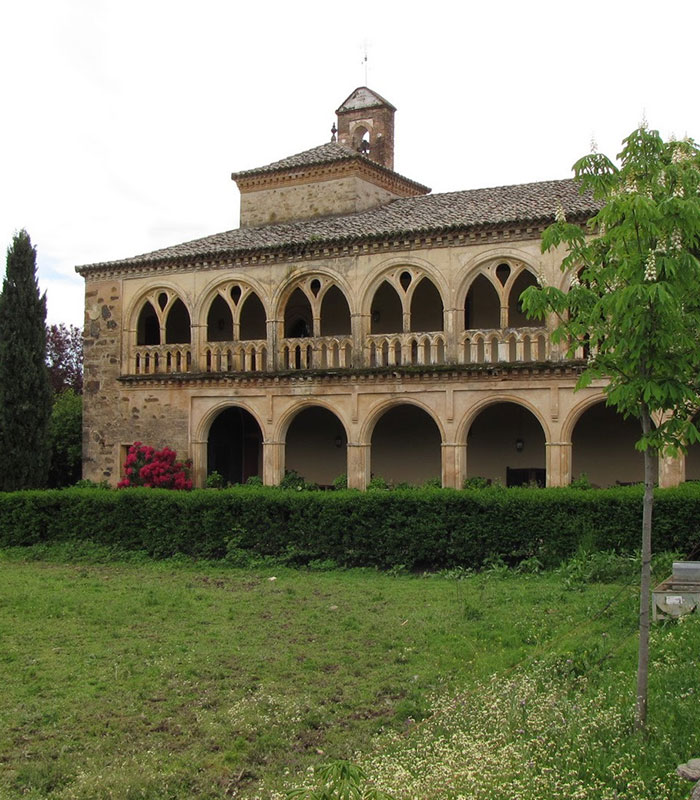The Granja de Valdefuentes, a royal and Hieronymite residence, is almost hidden in the woods near Guadalupe. With the aspirations of a palace, albeit with the dimensions of a country house, it is one of the hidden historical heritage treasures of the Villuercas-Ibores-Jara Global Geopark of the UNESCO. Both its history and its age and original function are almost identical to those of the Granja de Mirabel which is only a few kilometres away. Also in common with the latter, it was declared a Historical Artistic Monument in 1931 by the Interim Government of the Second Spanish Republic. It is in private hands and cannot currently be visited.
To the east of the Granja de Mirabel lies this other palace with such a similar history. Surrounded by nature and near the Stream of Santa Cecilia (to whom the Chapel of La Granja is dedicated) and in the vicinity of Guadalupe, it was built in the first third of the 14th century. It was also one of the favourite residences of the Catholic Monarchs when they visited the Monasterio de Guadalupe, alternating with the Granja de Mirabel.
For a long time it was owned by the Hieronymite monks who renovated it on successive occasions, accommodating in its buildings not only monarchs but also noblemen making the pilgrimage to the sanctuary of the Virgen de Guadalupe. The most important work was carried out between 1551 and 1554 on the orders of Philip II, who submitted the complex to extensive remodelling to make it finally a residence for him; it should not be forgotten that ‘the Prudent King’ was very fond of the peace of these landscapes. The result of all these alterations down the centuries is a peculiar combination of styles which give a curious appearance to the building with its Gothic, Mudejar, and Renaissance elements.
